ACT and College Going in Nebraska
Understanding college enrollment decisions through statewide assessment

In the spring of 2016, the Nebraska Unicameral passed LB 930, requiring that state accountability testing at the high school level be completed through the administration of a college entrance exam.
One of thirteen states nationwide, Nebraska implemented the ACT as its eleventh grade statewide assessment. This standardized measure of academic readiness provides valuable insights for evaluating student preparedness for college across these regions.
This detailed analysis focuses on the influence of ACT scores on Nebraska public high school graduates' decisions to pursue higher education. The ACT, aimed at evaluating academic competence, is also a vital gauge of a student's readiness for the rigors of postsecondary education.
The choices made by students in Nebraska, informed by these scores, carry considerable implications, not only for the individuals but also for the future educational strategies, workforce development, and policymaking in the state.

COVID-19 and the ACT

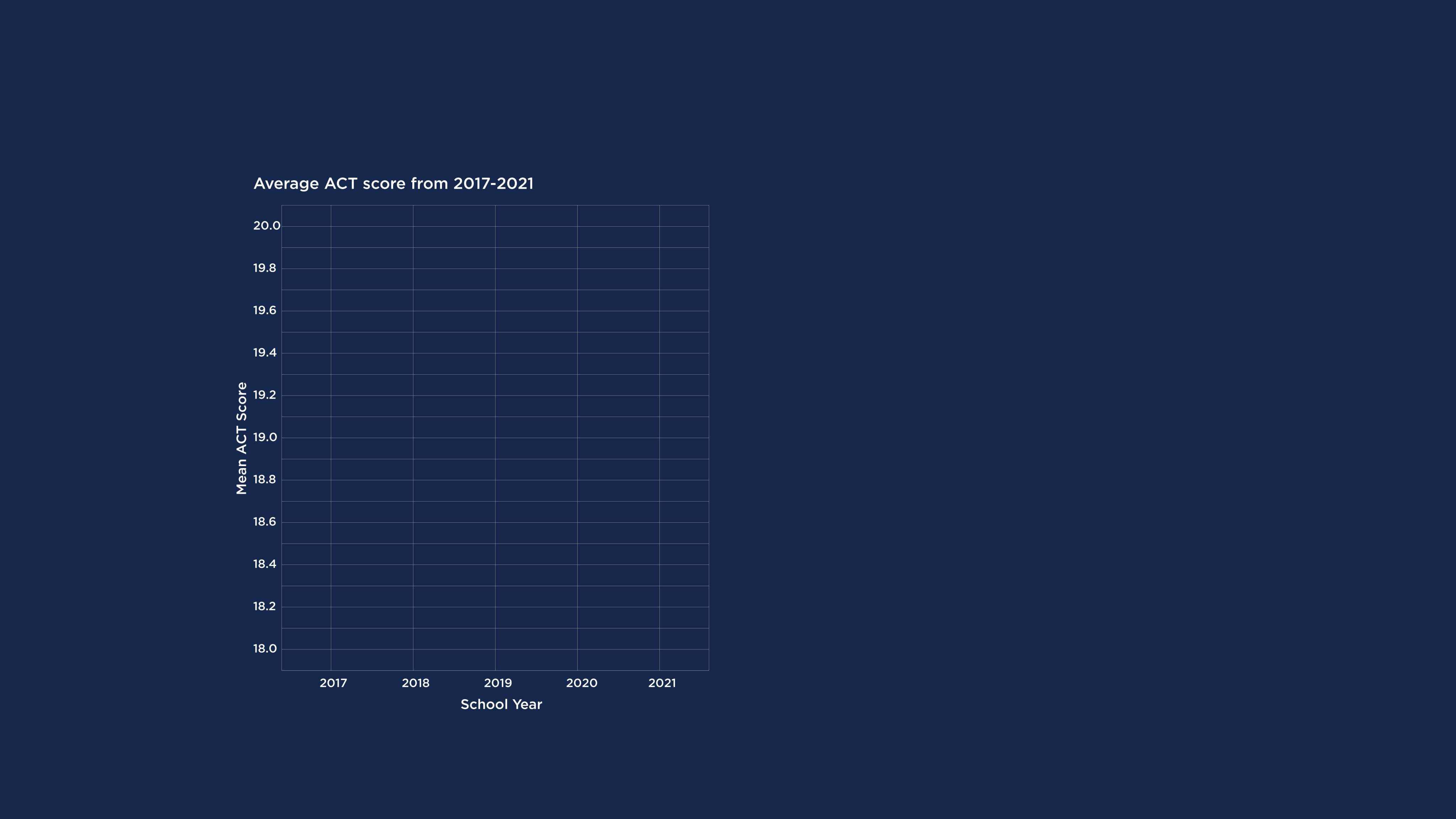
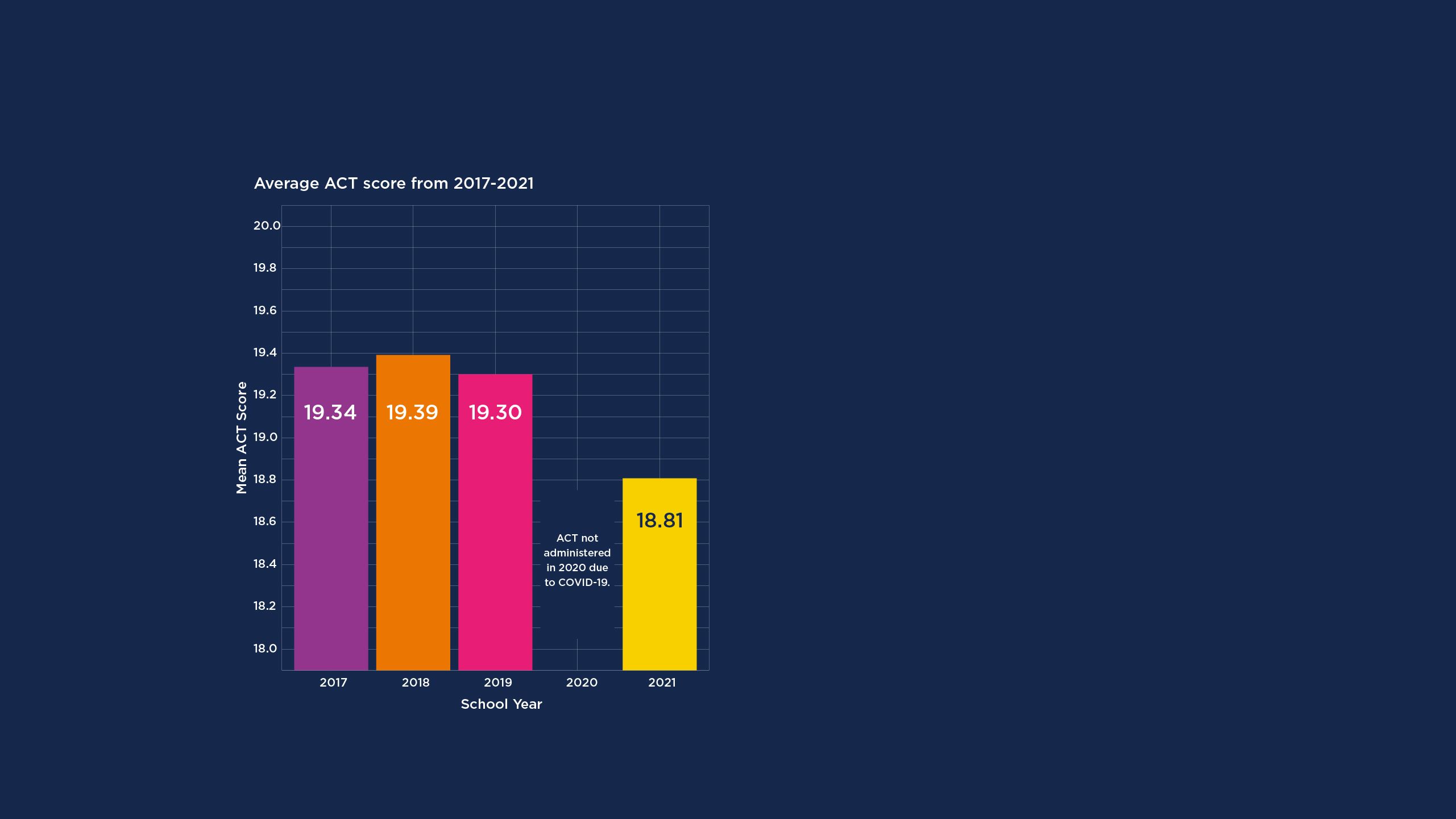
COVID-19 and the ACT
In the wake of the COVID-19 pandemic, ACT scores saw a noticeable drop. This decline in scores highlights the length to which students and schools were disrupted during this challenging period.
Now, during the recovery phase, it's still unclear how long it will take for these scores to get back to what they were prior to the pandemic.
This drop in scores isn't just about numbers—it has major effects on college admissions and the education pathways of students.
In this analysis, we'll explore why this drop is important and how it could change the way students go to college and shape the landscape of higher education in Nebraska.
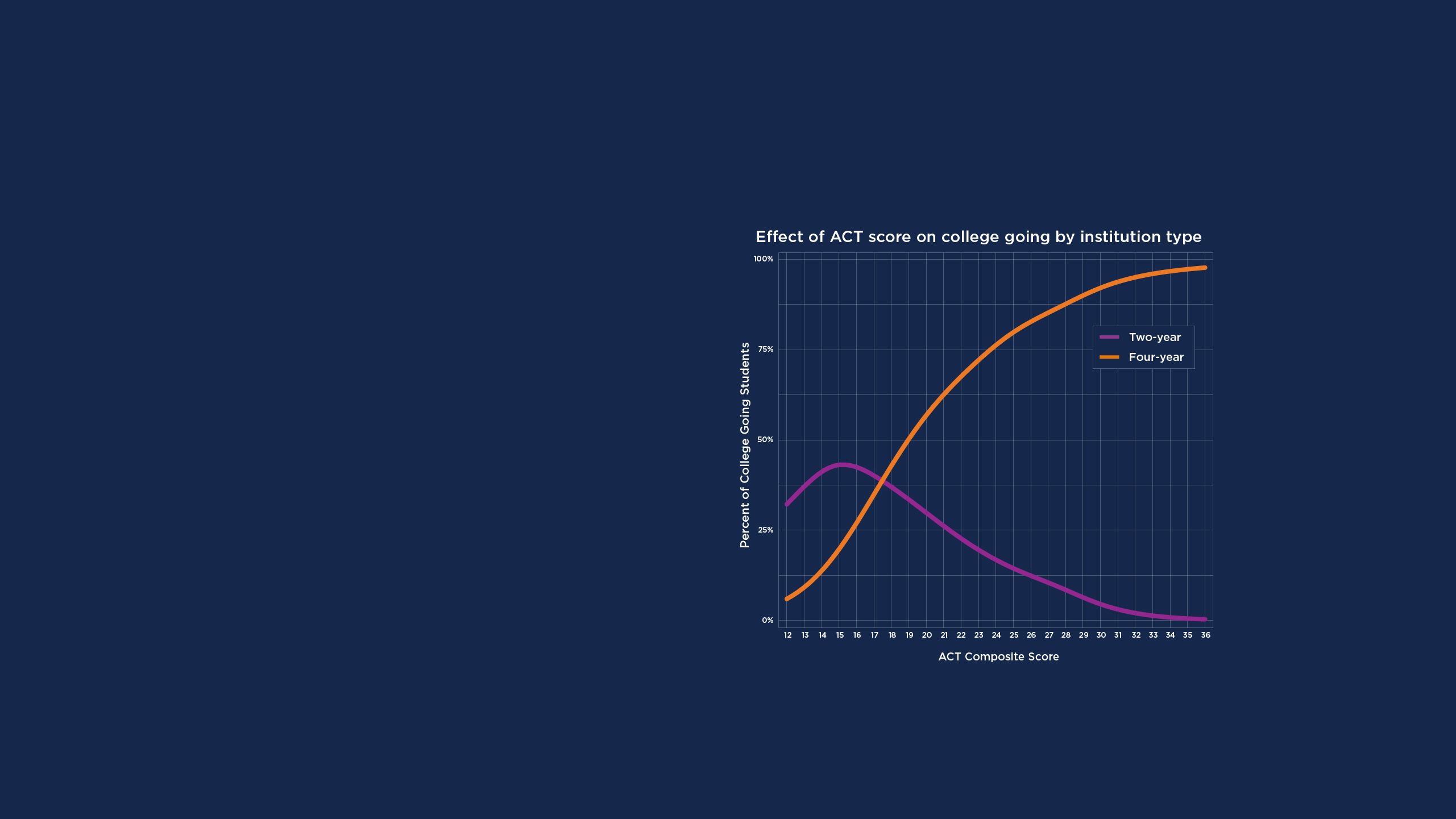
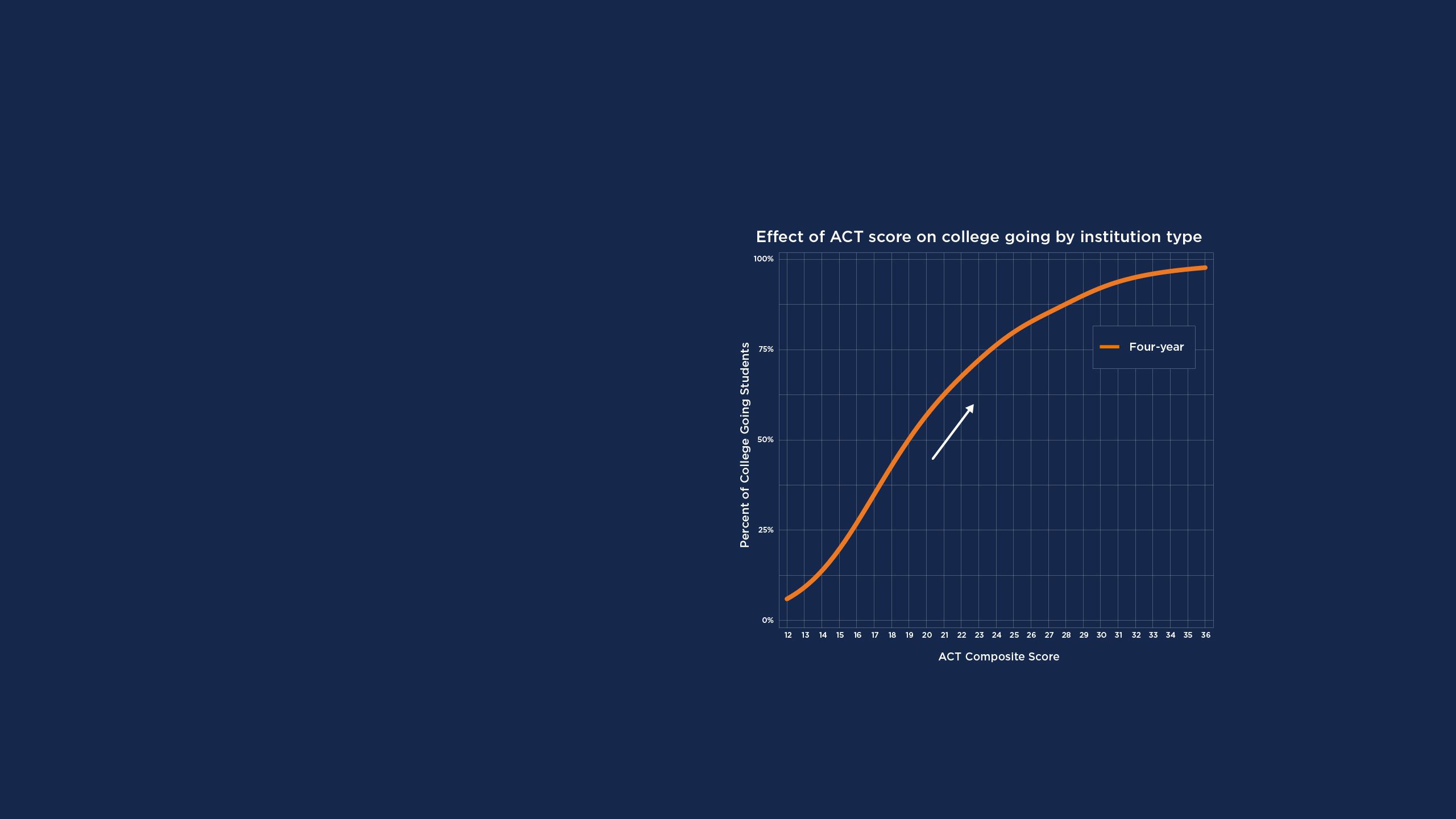
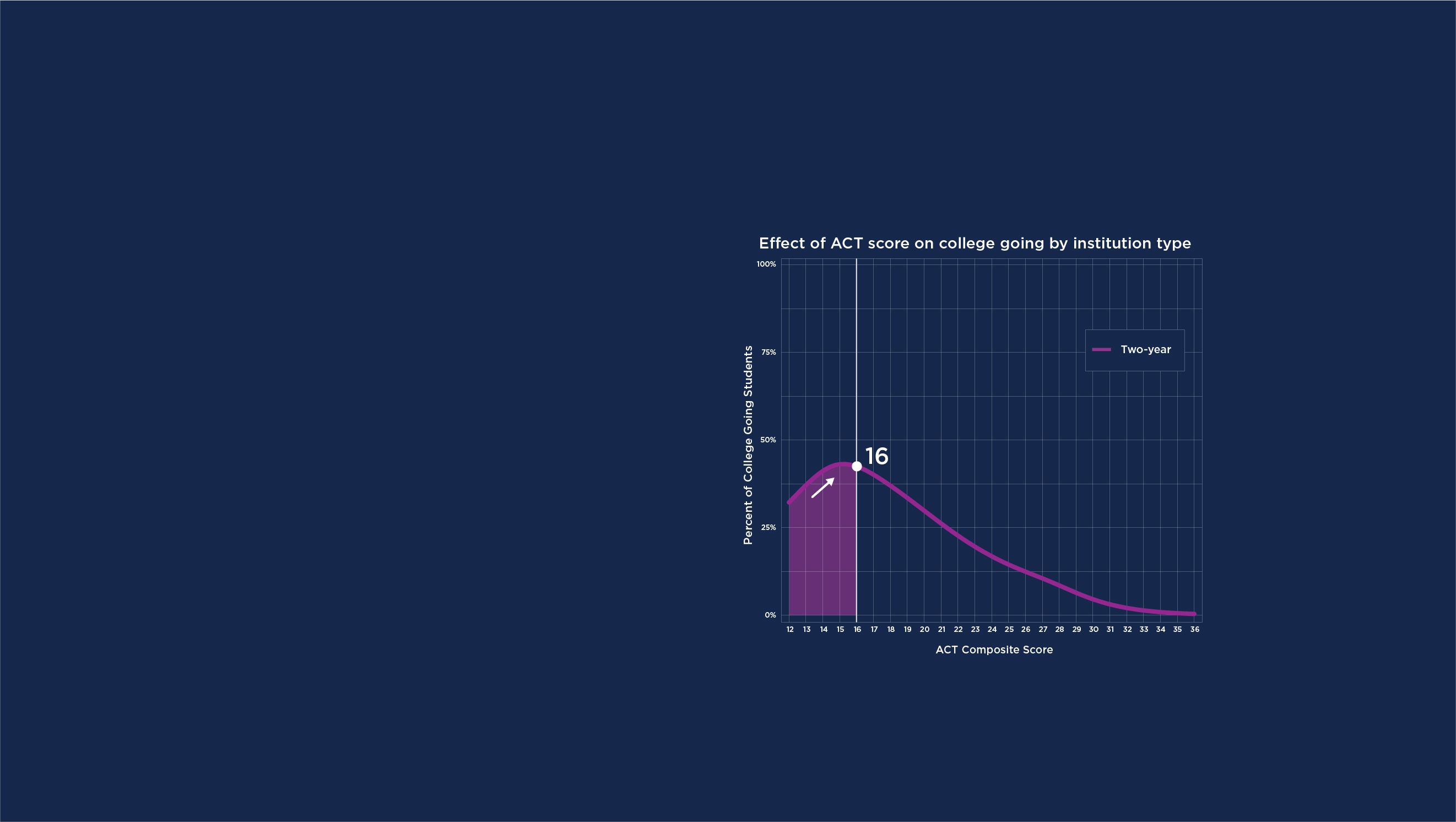
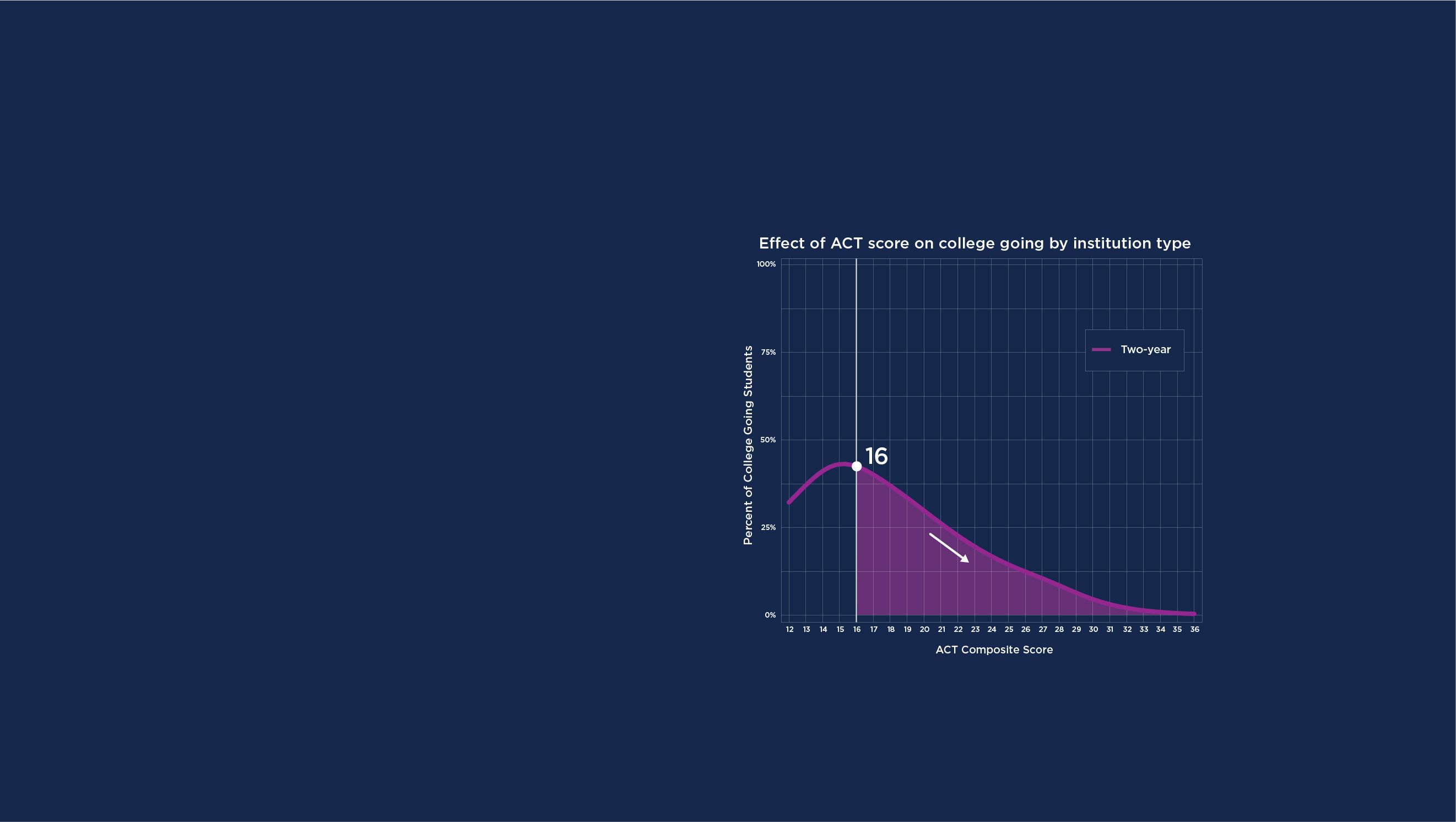
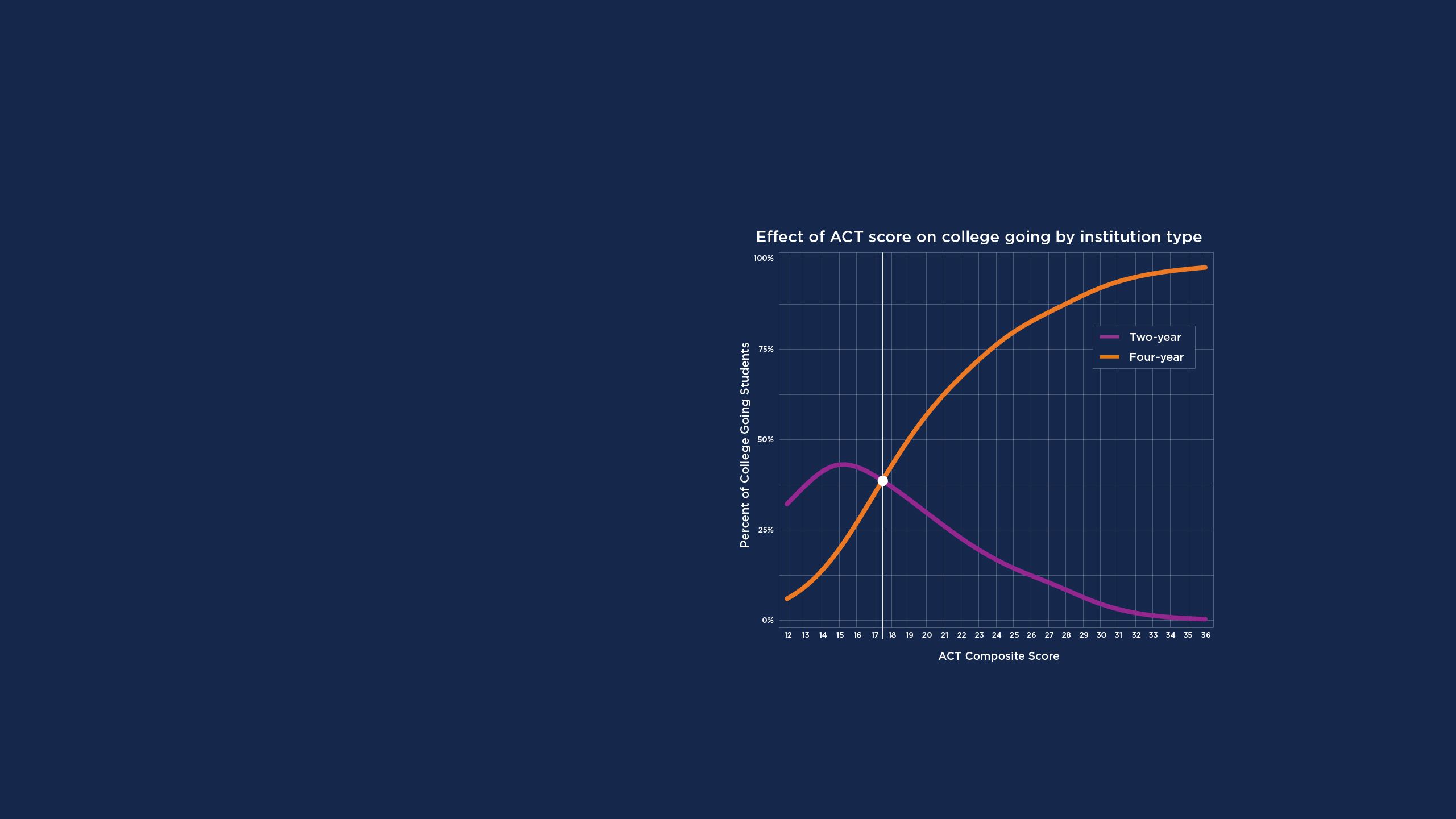
Two-year and Four-year College Going
ACT scores have a significant impact on the college choices of high school students.
The higher a student's ACT score, the more likely they are to pursue higher education.
Yet, the type of institution they choose–two-year or four-year–can vary based on their scores.
For instance, as a student's ACT score increases, their likelihood of attending a four-year college also tends to increase.
On the other hand, the relationship between ACT scores and the likelihood of attending a two-year college is more nuanced.
For scores below 16, an increase in ACT score corresponds to an increased likelihood of attending a two-year college.
However, interestingly, this trend reverses for scores above 16, where the probability of attending a two-year college starts to decline.
The tipping point appears to be at an ACT composite score of about 18. Nebraska public high school graduates with scores in this range are equally likely to attend either a two-year or four-year institution.
This could reflect a point of deliberation for students, weighing the advantages of both pathways in relation to their academic preparedness, career plans, financial situation, and personal circumstances.
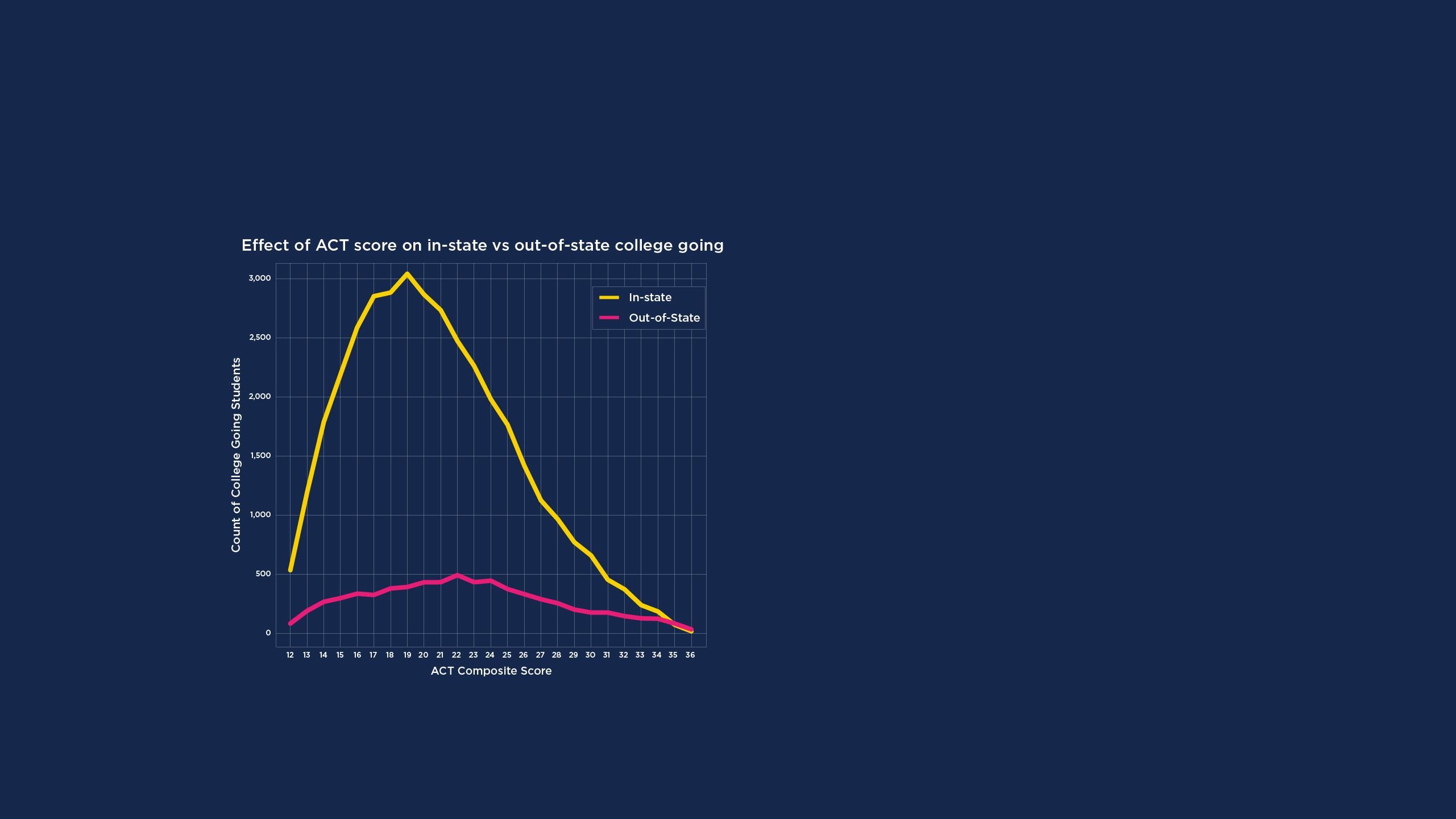
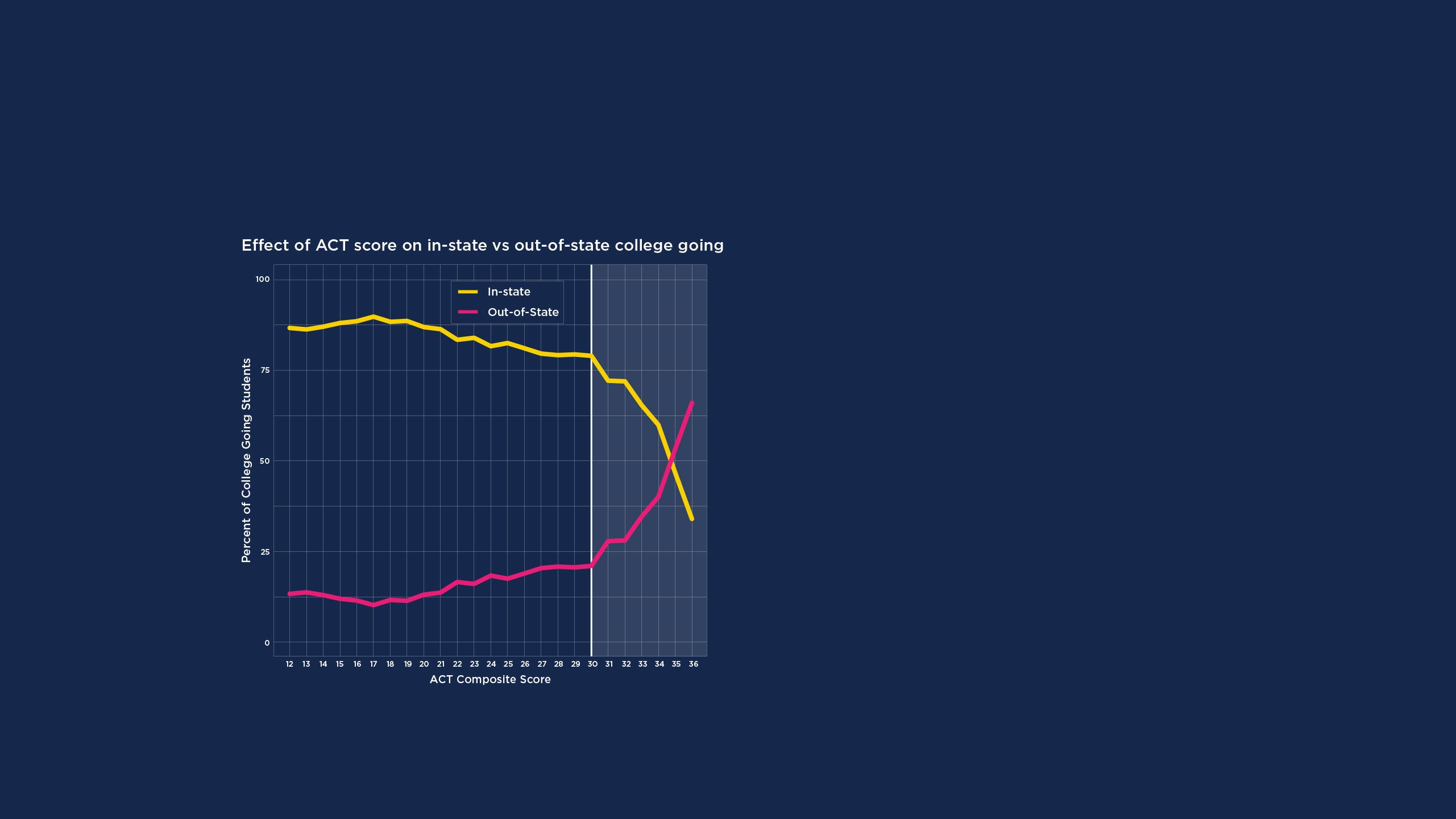
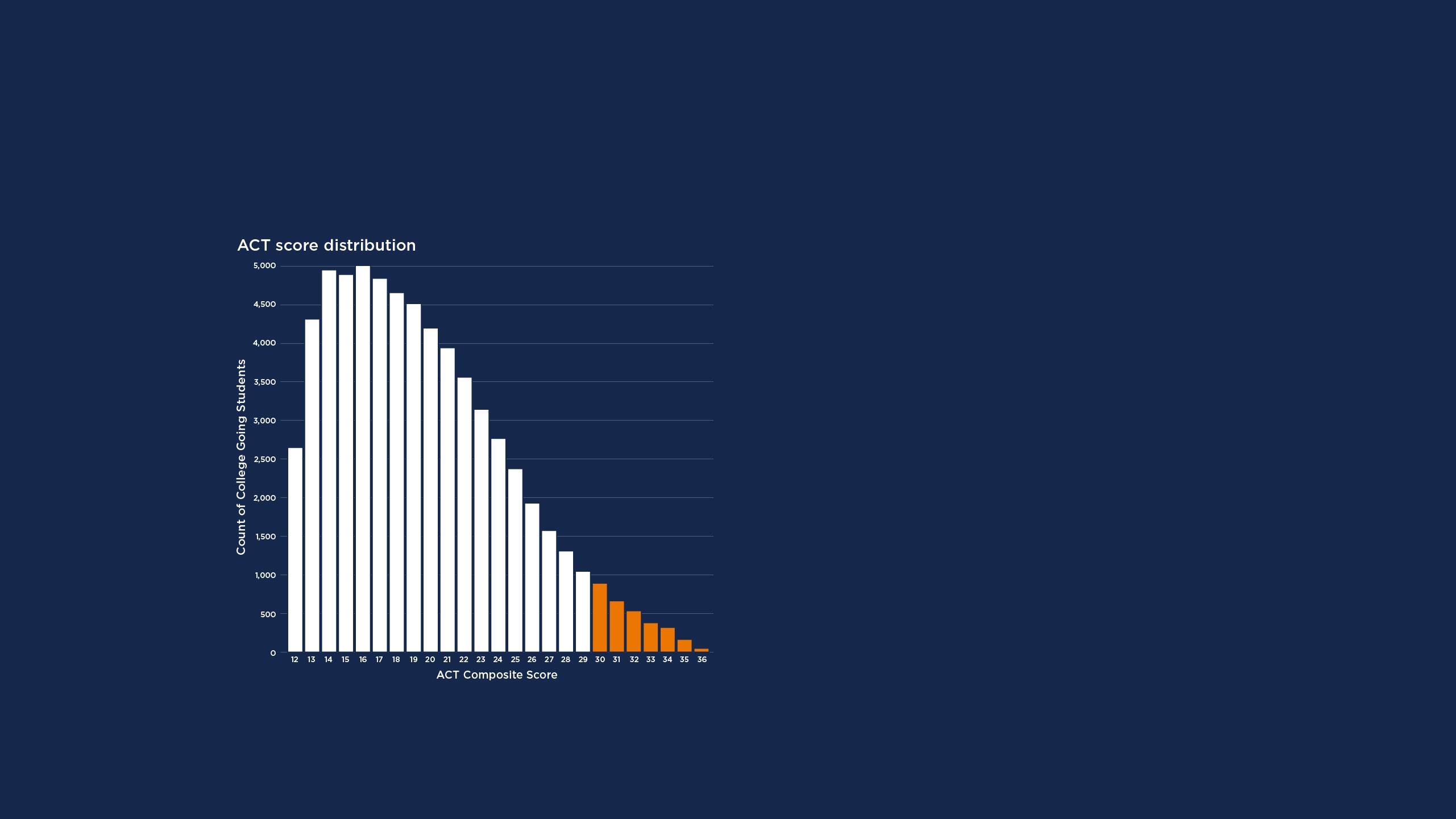
In-state Versus Out-of-state
Nebraska's public high school students predominantly choose to continue their education within the state. This pattern aligns with common trends observed nationwide, with factors such as familiarity, proximity, and affordability likely playing significant roles in students' decisions.
However, an interesting deviation emerges at the upper levels of ACT scores (30+). The higher the ACT score, the more likely Nebraska public high school students are to attend out-of-state institutions for their postsecondary education.
These students might feel more confident in their academic abilities or may be attracted to educational opportunities or scholarships available at out-of-state institutions.
While this trend is startling, it’s important to note that, relatively speaking, these scores represent a small fraction of students overall. In Nebraska, typically less than five percent of students achieve an ACT composite score above 30.
Many of these students choose to attend college out of state. NSWERS is working to better understand how this decision impacts a student’s choice to live and work in Nebraska after completing their education.
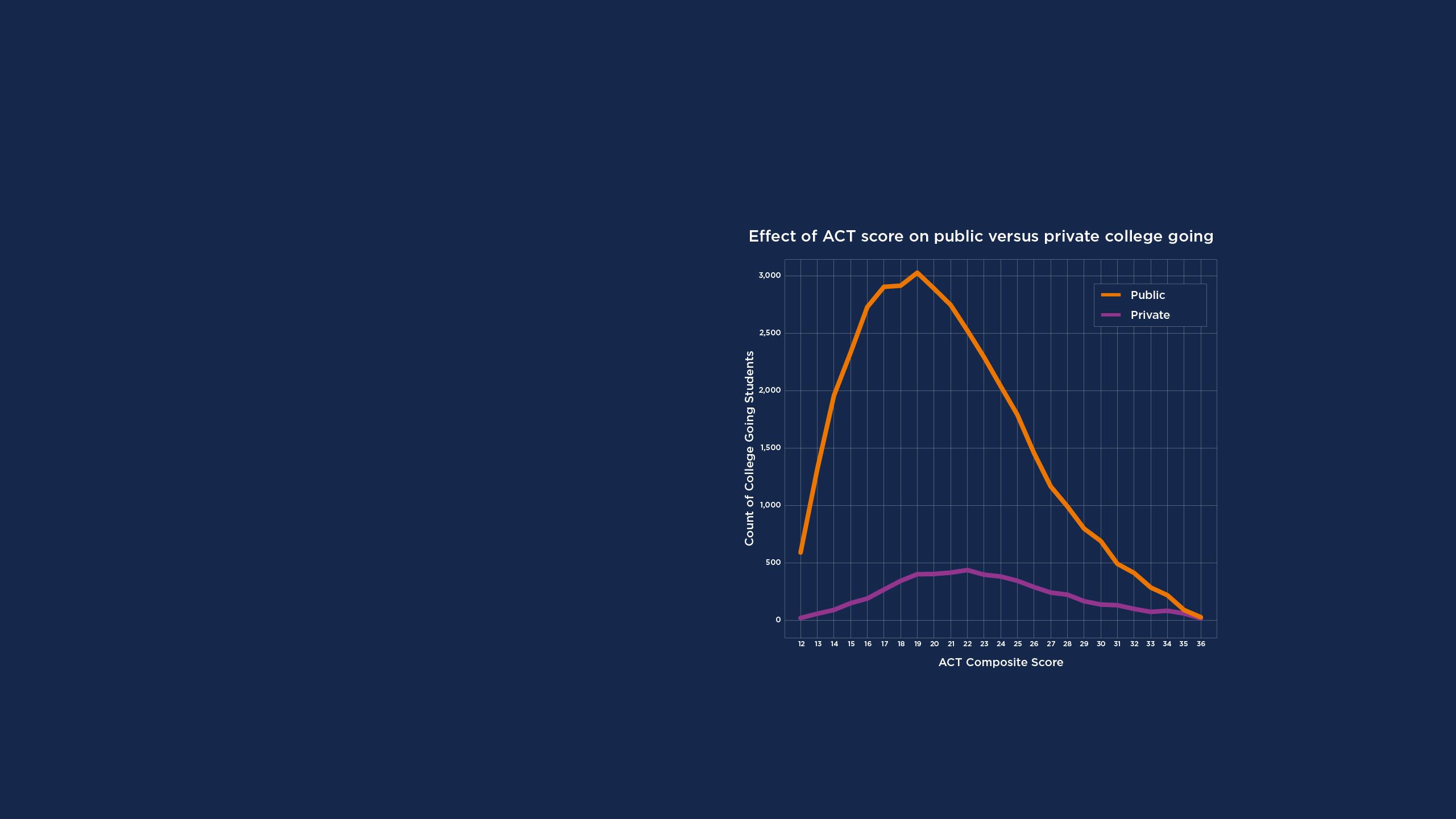
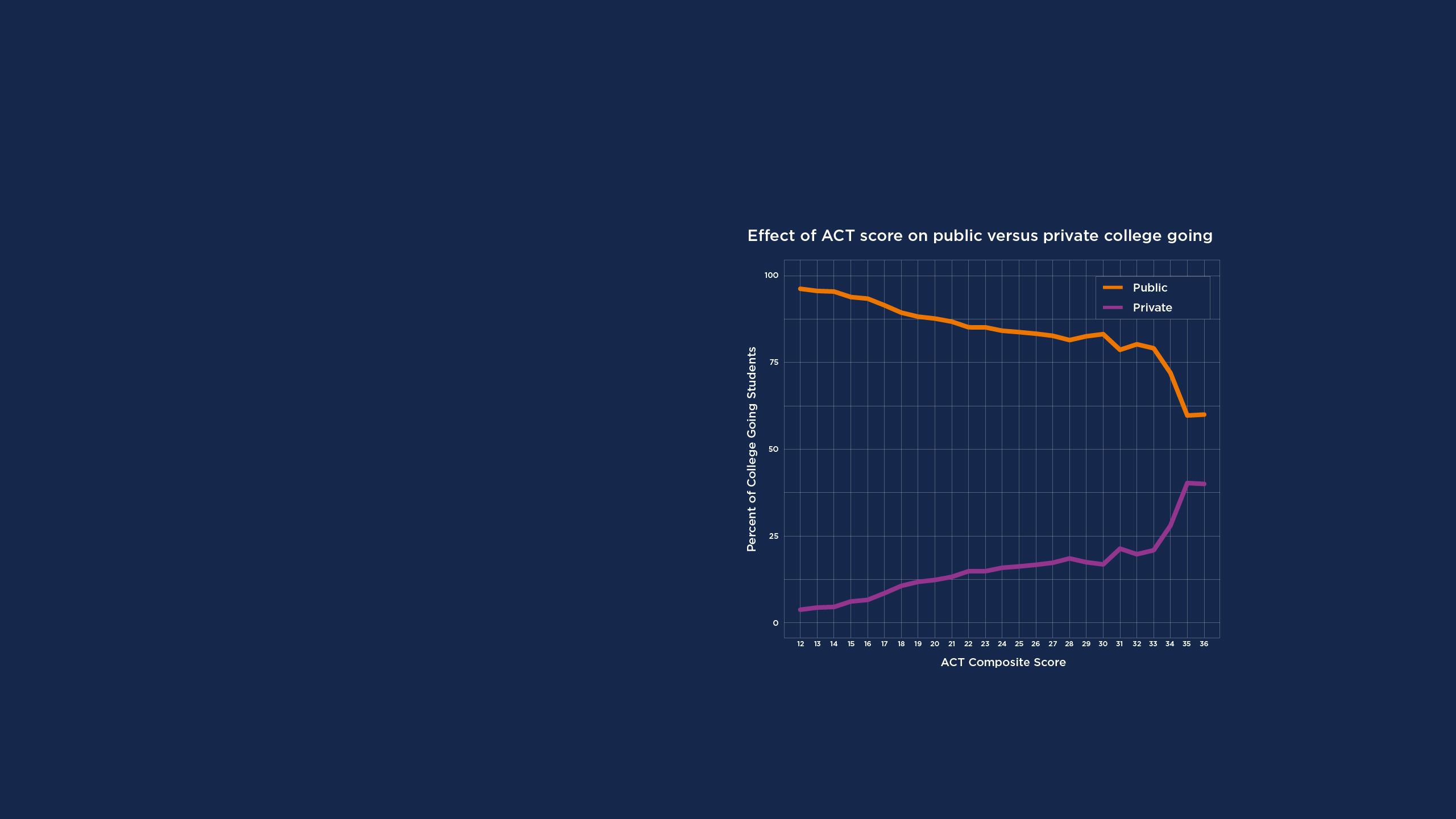
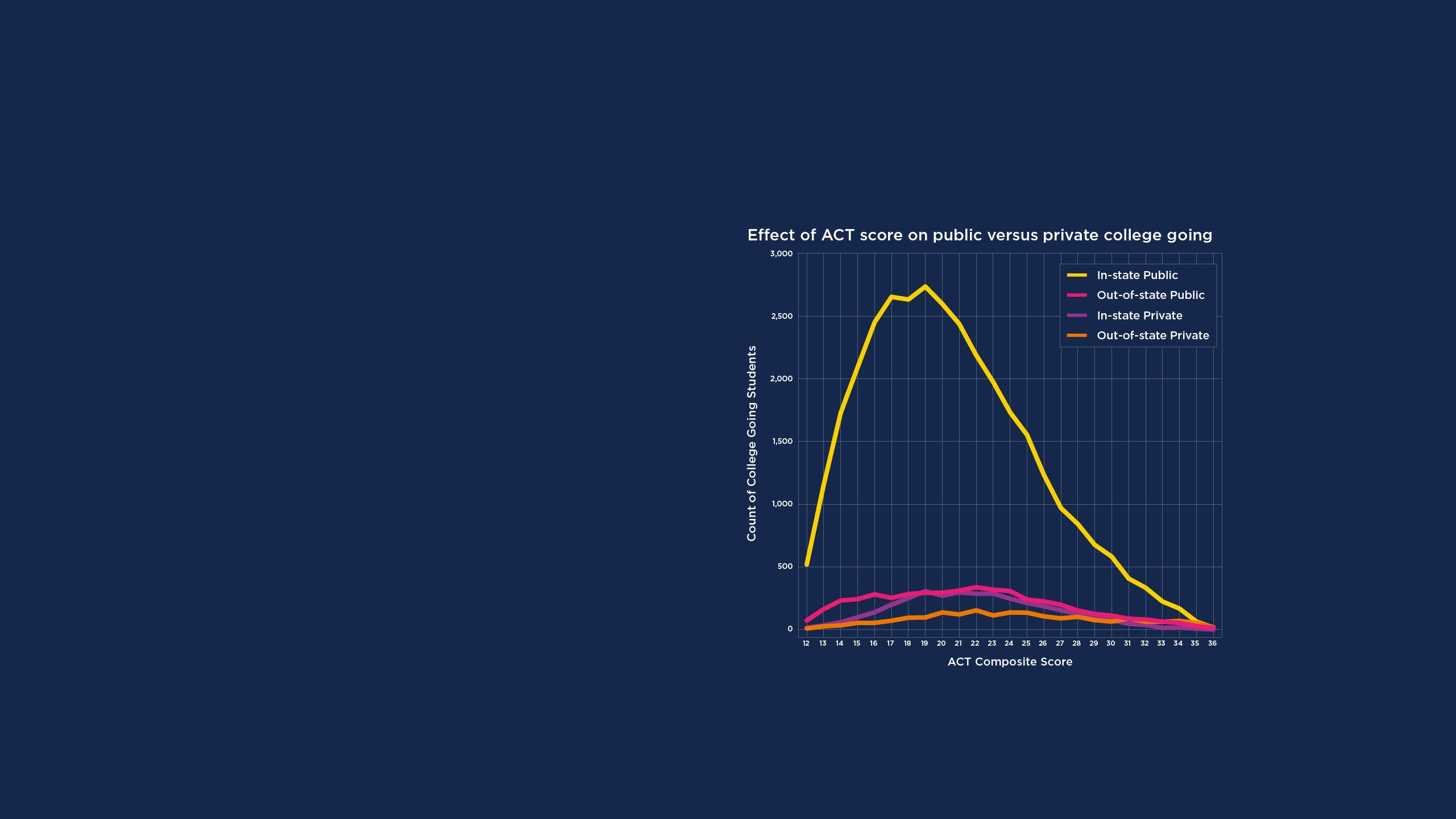
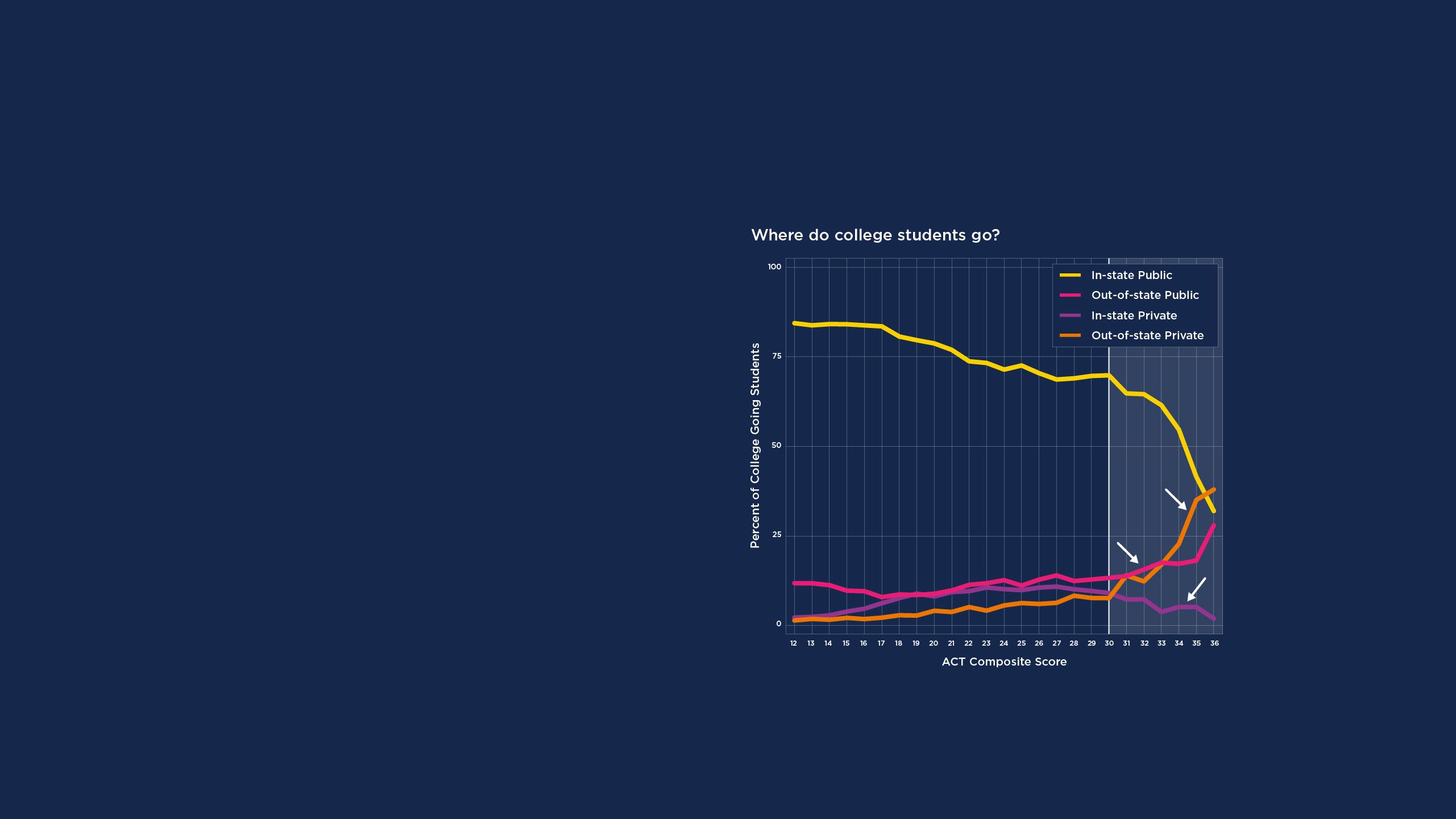
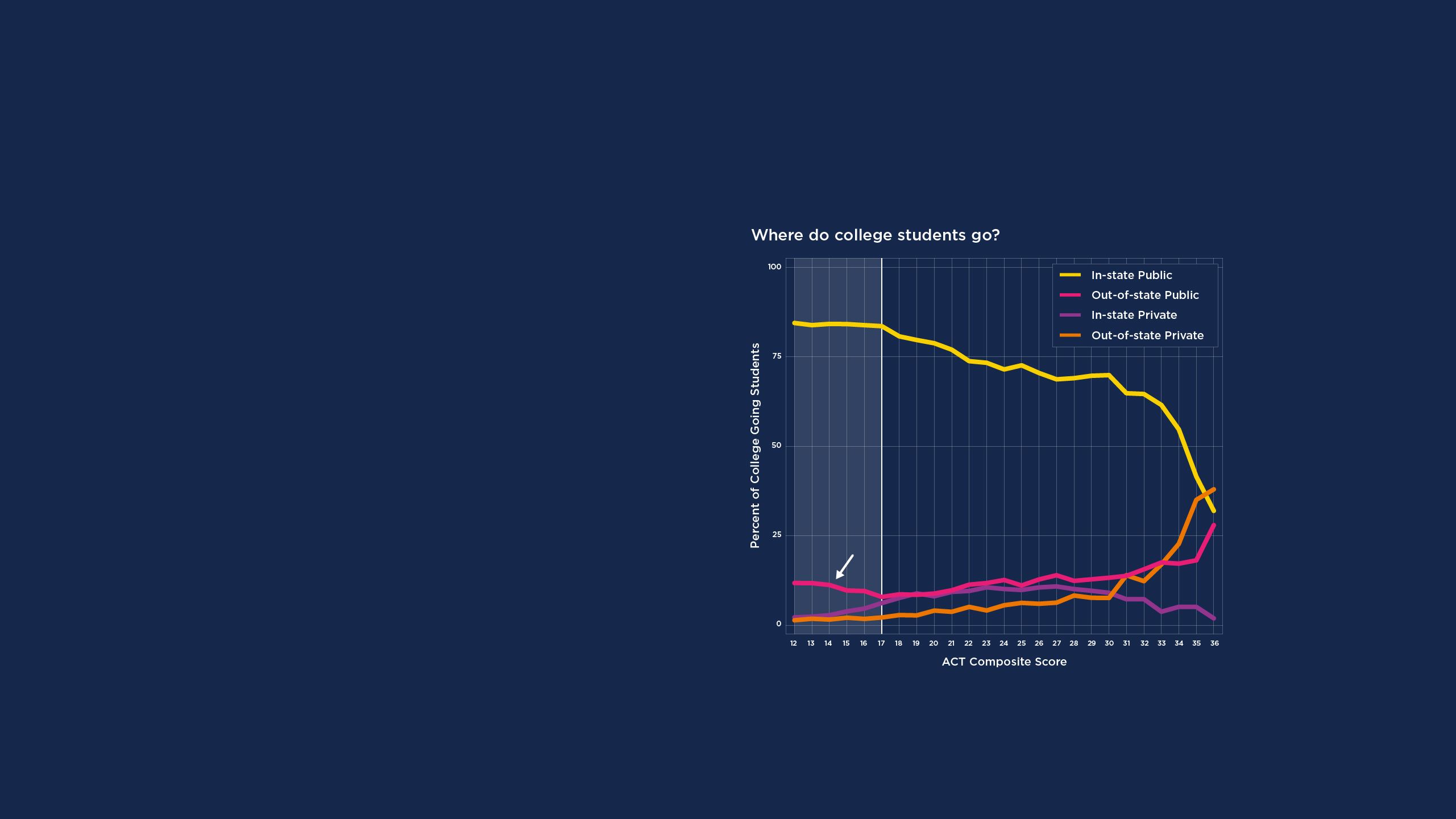
Public Versus Private College
National trends show that about 70 percent of college students attend public institutions versus 30 percent for private institutions. This trend is also true in Nebraska where the majority attend public institutions.
Within Nebraska, the choice to attend private institutions is influenced by ACT scores, where the likelihood of attending a private institution increases as ACT scores increase.
However, the relationship of the private/public dichotomy and ACT scores is better understood by further breaking down the data on the location of the institution (in-state vs out-of-state).
Patterns in college selection—whether public versus private or in-state versus out-of-state—seem to be influenced significantly by ACT scores among Nebraska students.
Higher ACT scores generally lead to an increased chance of exploring out-of-state options, including both public and private institutions.
The chance of attending an in-state private institution decreases as potentially more prestigious out-of-state private options become available.
Additionally, an interesting trend emerges at the lower end of the ACT scores. Some students opt to pursue public postsecondary education at institutions just across the state border, offering comparable tuition rates to those in Nebraska.
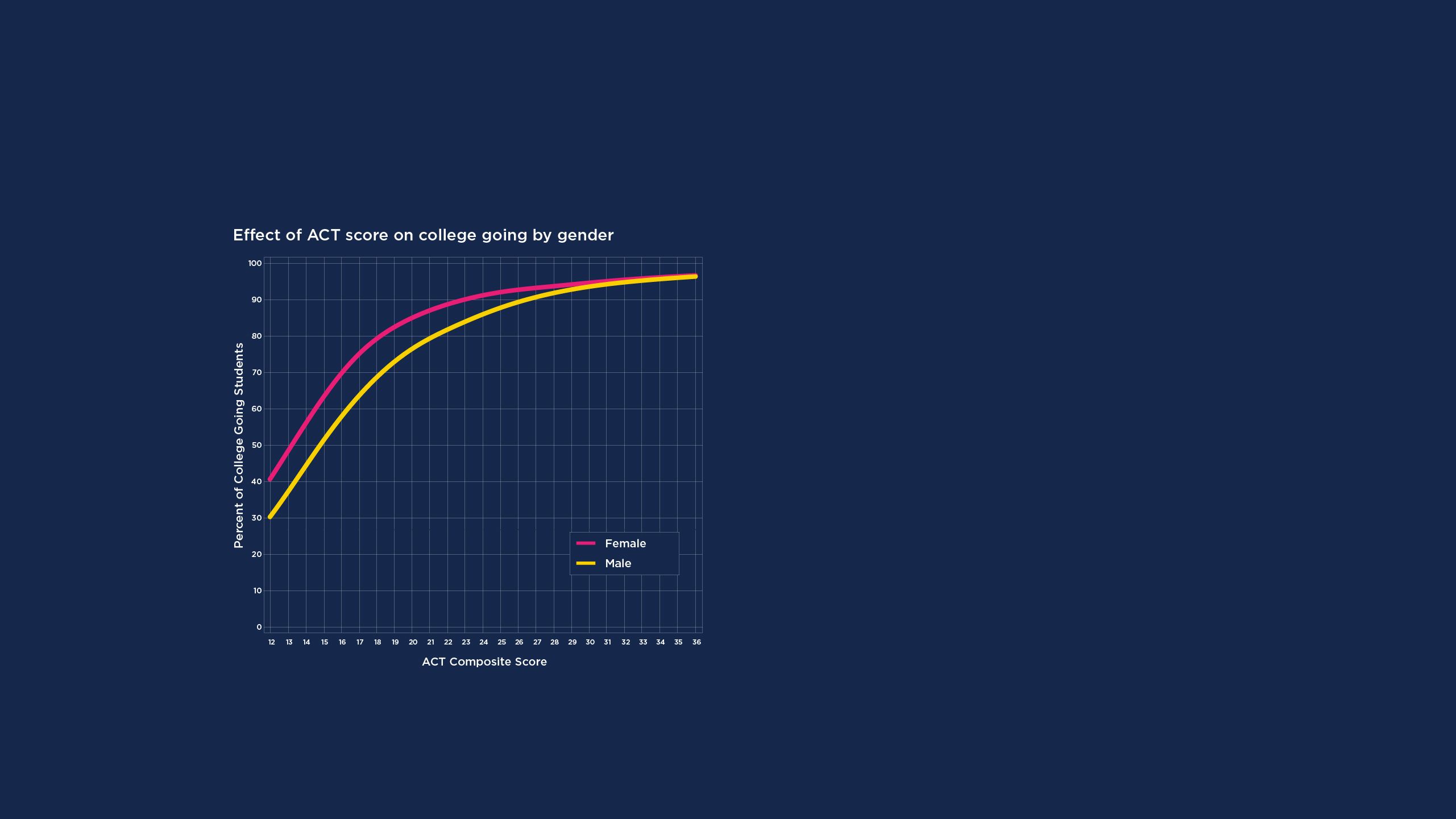
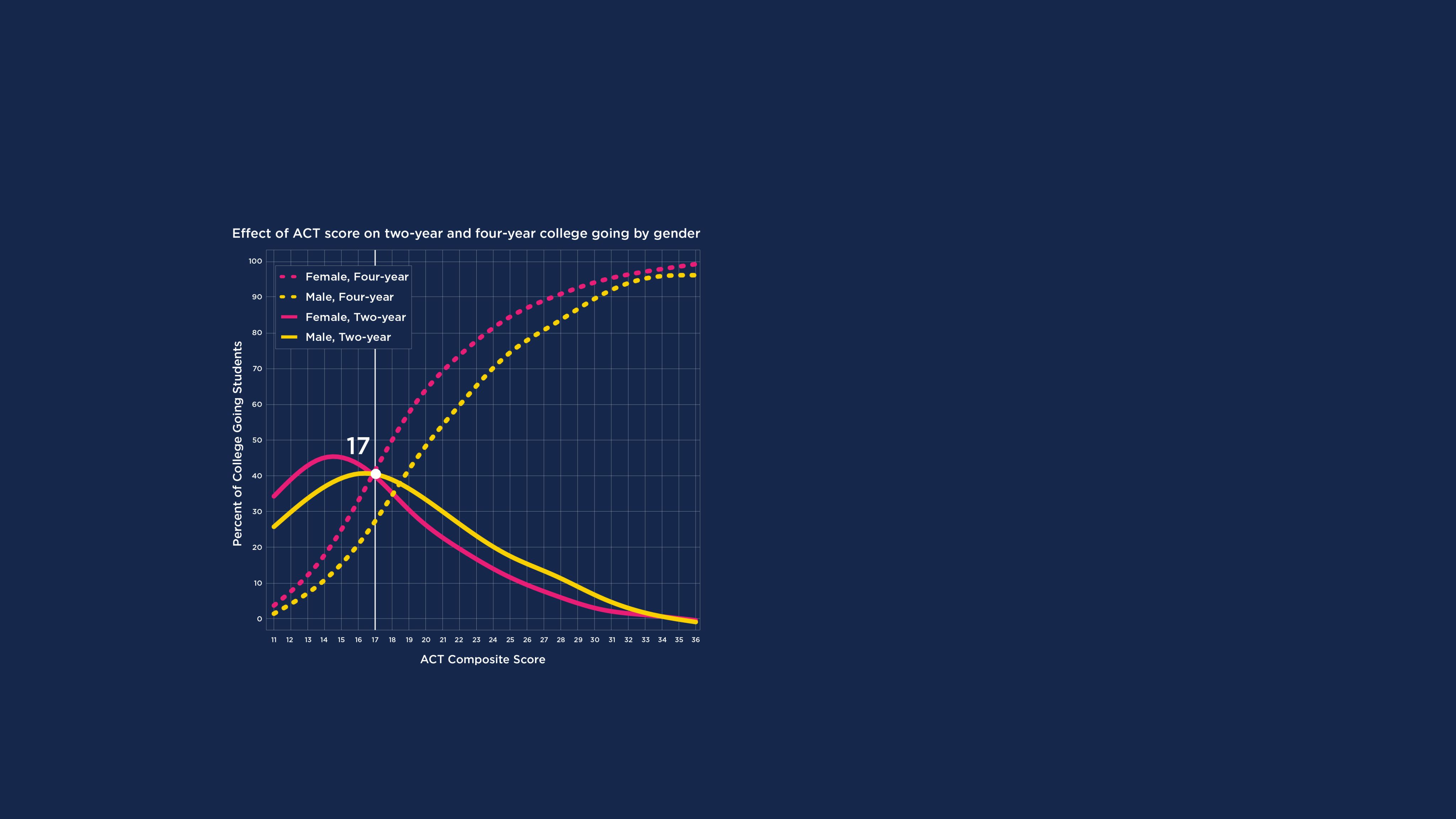
Gender
Recently, female students have been consistently maintaining higher college-going rates than their male counterparts. This trend becomes more nuanced when considering ACT scores. For the same ACT score, female students are about 10 percent more likely to attend college than males.
However, these differences disappear once ACT scores reach about 26, illustrating an intriguing interplay between academic proficiency and gender in college enrollment trends.
Moreover, there is a notable difference in the type of postsecondary institutions male and female students choose after high school.
For students with an ACT score above 17, male students tend to choose two-year colleges more than female students. In contrast, female students with similar scores are more likely to choose four-year institutions.
This trend reveals the complexity of college-going decisions, shedding light on how academic performance and gender converge to influence students' choices on their educational paths.
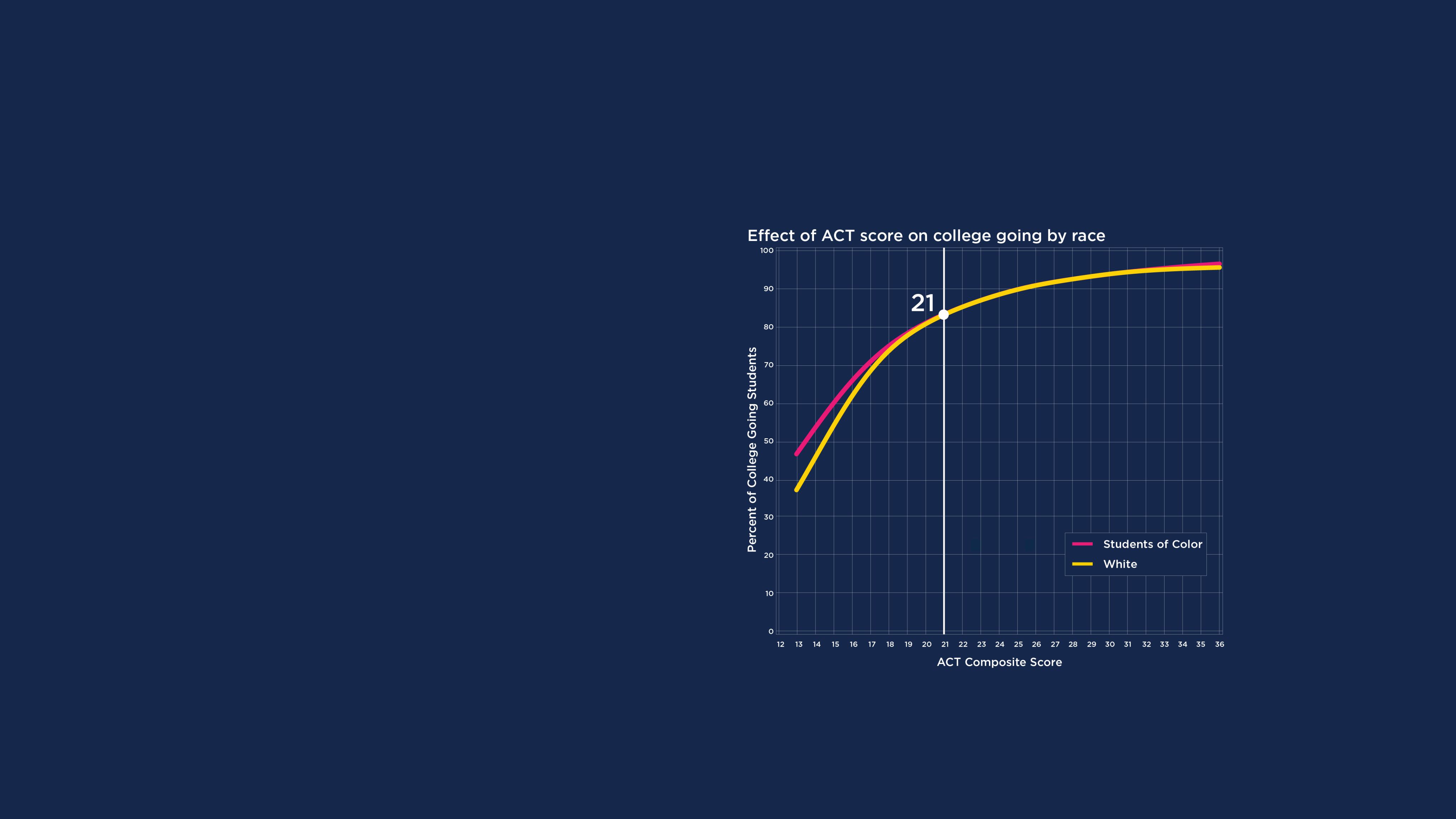
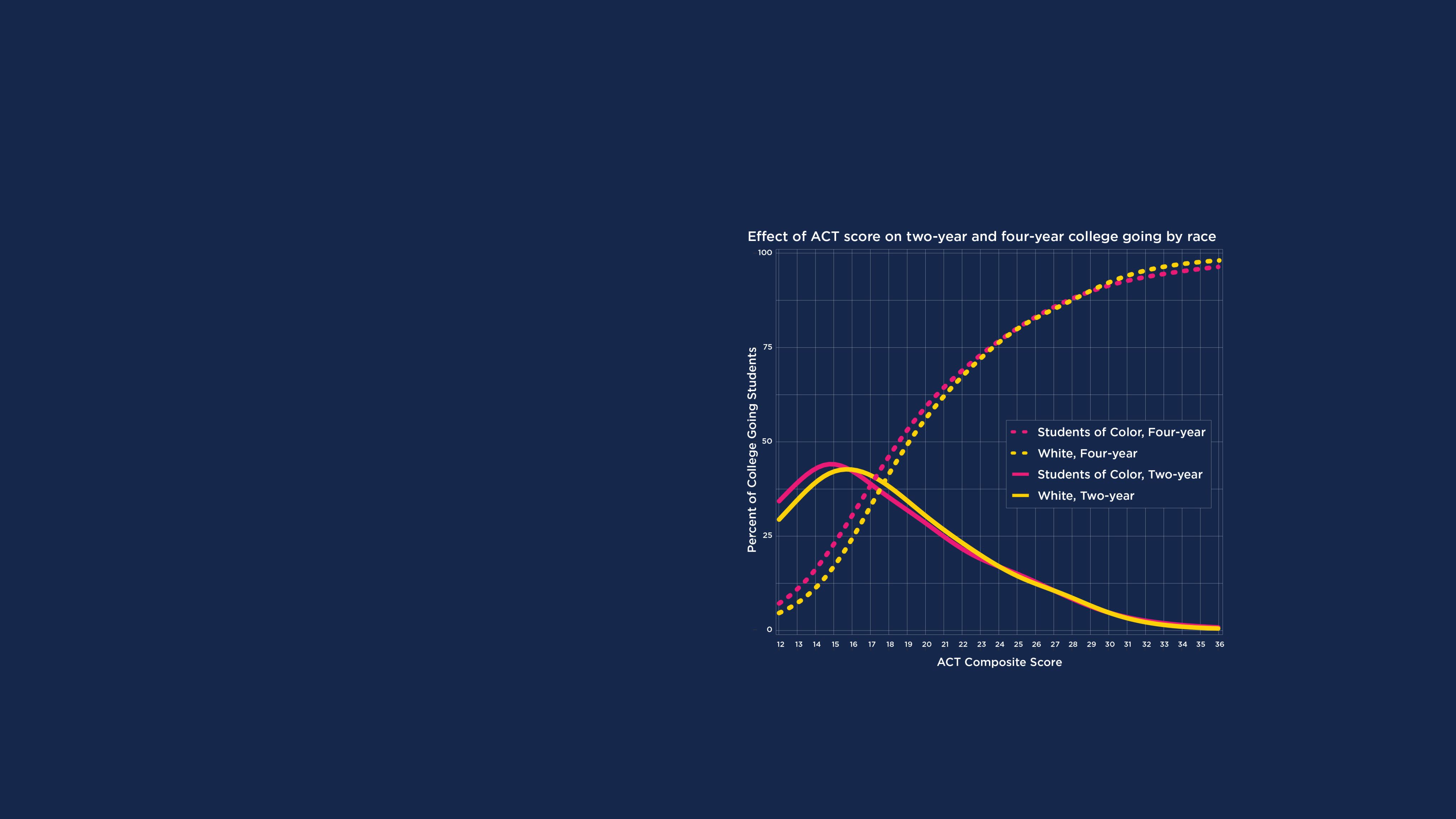
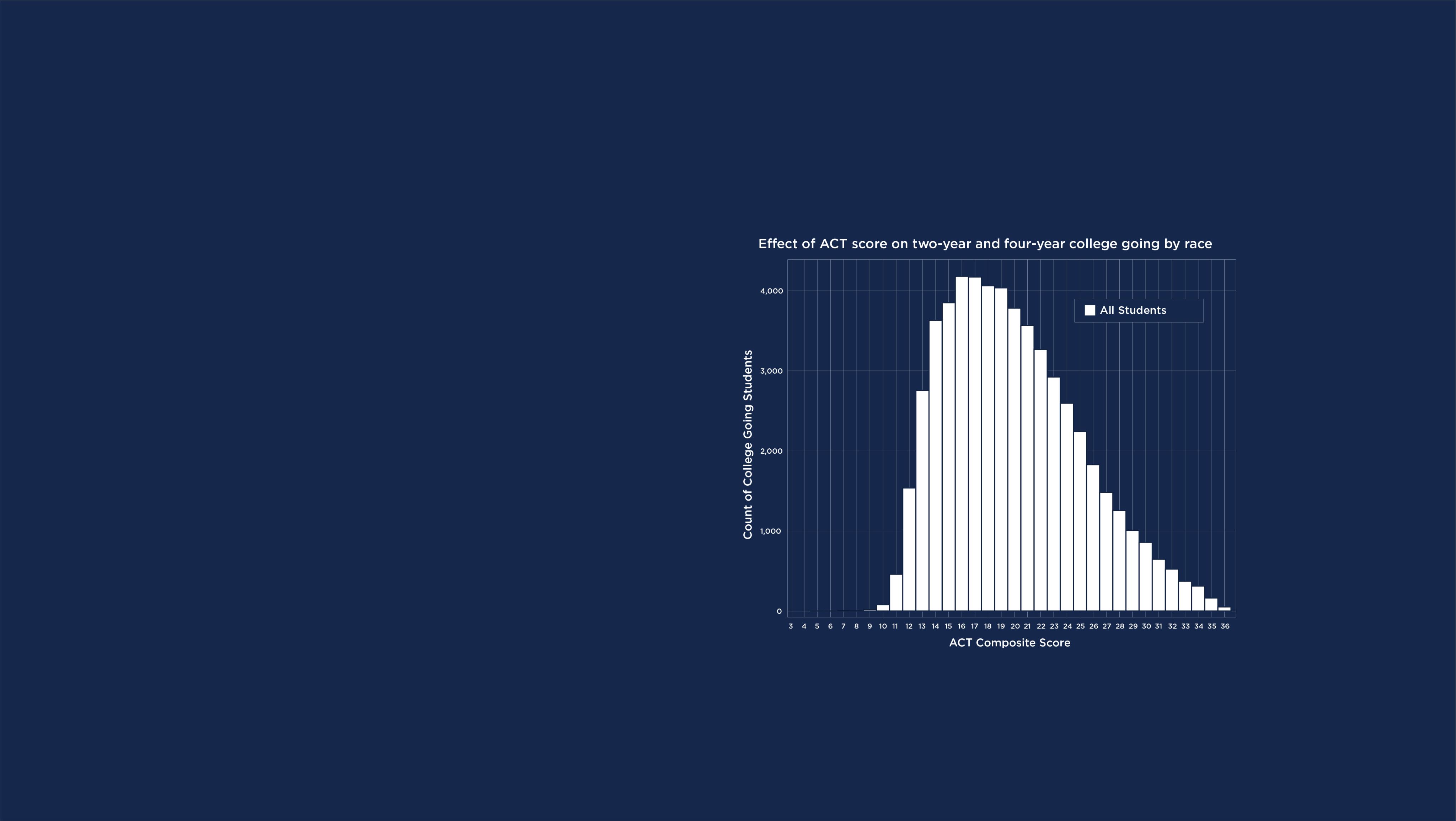
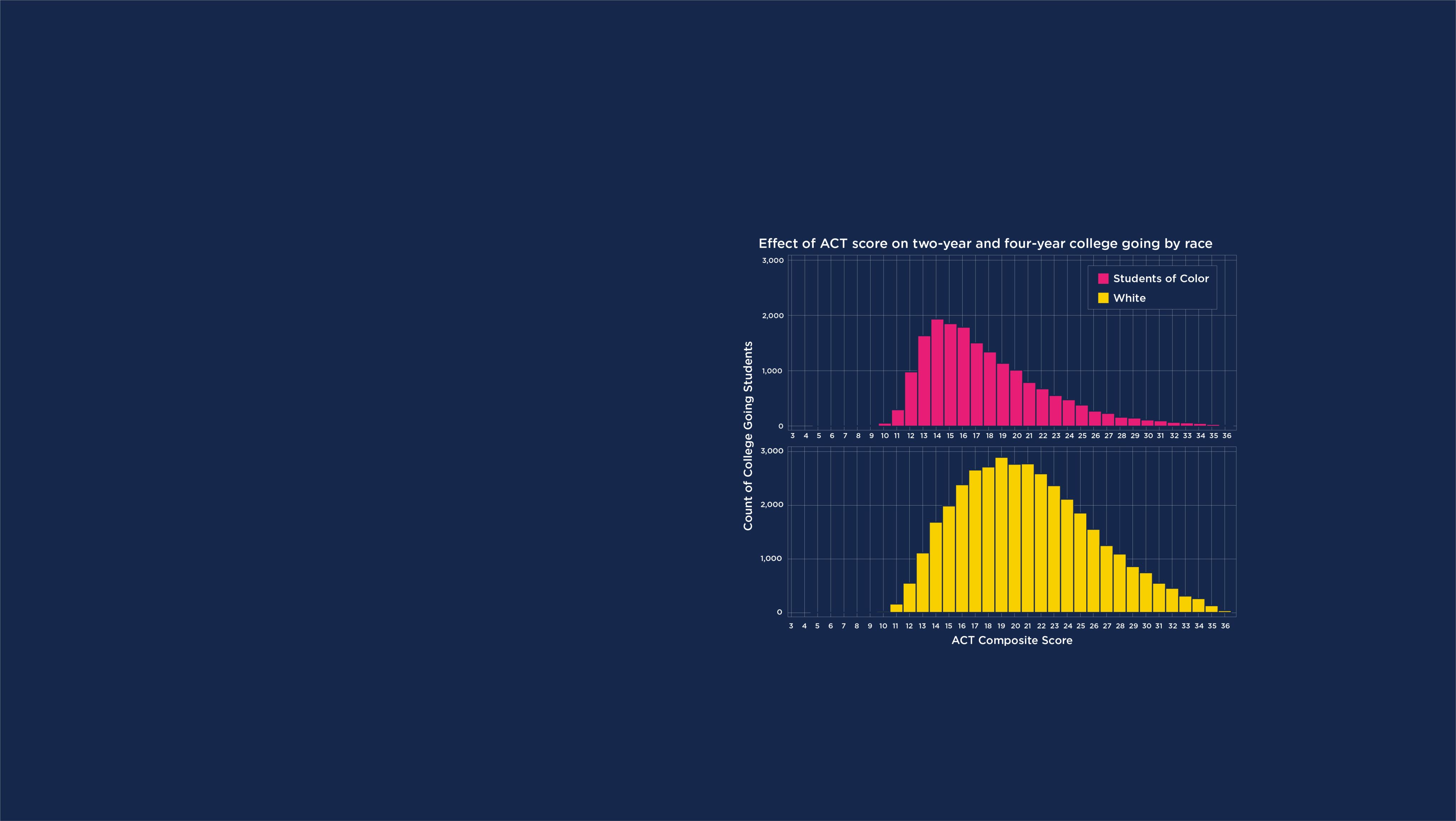
Race
In addition to gender, racial categories also appear to influence college-going decisions. At the same ACT score, students of color have been found to be slightly more likely to attend college than their white counterparts. This difference, however, tends to level off for ACT scores above 21.
For these racial categories, breaking down college going rates by the type of postsecondary institution reveals some additional trends.
The previous figure illustrated that for ACT scores less than 21, students of color were about 5-10 percent more likely to go to college.
The choices of institution type for these students are highlighted in this figure.
The previous two figures show that at the same ACT score, students of color are typically just as likely to attend college than their white counterparts. However, students of color have lower college going rates than white students overall.
For the population sample used for this story, the college going rates for students of color and white students were 65.6 percent and 75.0 percent, respectively. These data seemingly lead to a contradiction, that is only resolved by looking at the underlying distributions of ACT scores.
These histograms show the distributions of ACTs for students of color and white students for the sample. The figure demonstrates that relative to white students, the distribution of ACT scores is centered on a lower average score, where students of color and white students have average ACT scores of 17.6 and 20.8, respectively.
These differences in the underlying distribution of ACT scores highlight that factors such as access to resources, quality of education, and socioeconomic status (which can influence test performance) play a significant role in shaping these trends.
Combined, this information explains the contradiction. While students of color tend to go to college at a similar rate to white students who have the same ACT score, the lower overall average ACT score for students of color is one factor that contributes to lower overall college going rates.
In exploring the college-going trends among Nebraska public high school students, the ACT has proven to be a lens through which we can understand the choices students make when deciding the type of institution they will attend–be it two-year or four-year, in-state or out-of-state, public or private.
At the heart of these trends, we've observed the interplay between ACT scores and various demographic attributes. Higher ACT scores generally correlate with a higher likelihood of attending college, with a particular tendency towards four-year and out-of-state institutions. On the other end of the ACT spectrum, some students opt for schools just across the border, highlighting that financial and geographical considerations play a part in shaping educational paths.
In summary, the ACT provides a valuable perspective in our understanding of the college-going decisions of Nebraska public high school students, shedding light on the interrelations between academic achievement and various demographic attributes. This clarity is crucial in informing educational policy decisions, guiding interventions, and fostering opportunities for students in their journey to higher education.
The Nebraska Statewide Workforce & Educational Reporting System (or NSWERS) is a collaboration among the six Nebraska Community Colleges, the Nebraska Department of Education, the Nebraska State College System, the University of Nebraska System, and the Nebraska Department of Labor to enable seamless integration of data across educational and workforce systems, provide data literacy education, and promote the use of this data to further evidence-based policy and practices across the educational systems of Nebraska.
These provisional results are based on certified NSWERS data as of August 15, 2023. Results in this story may change because of data resubmissions by NSWERS Partners and/or Affiliates. For updated results, please contact support@nswers.org.
Source: Alex Brodersen, Katie Bieber. ACT and College Going in Nebraska. Lincoln, NE: Nebraska Statewide Workforce & Educational Reporting System, 2023. insights.nswers.org.










